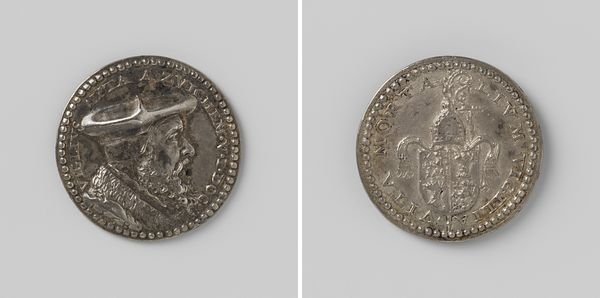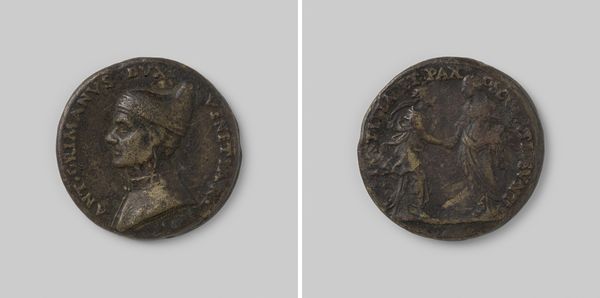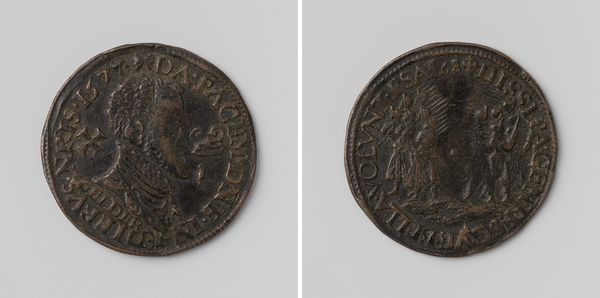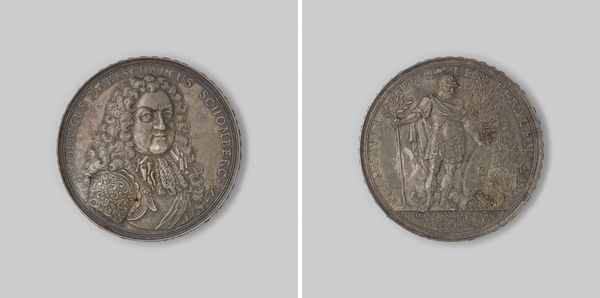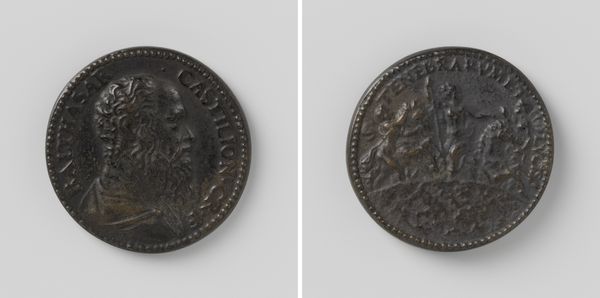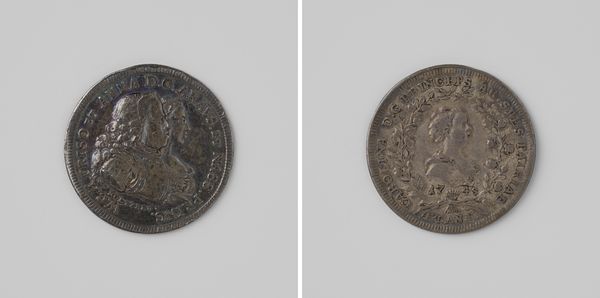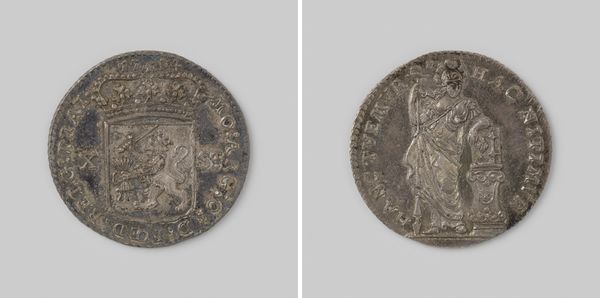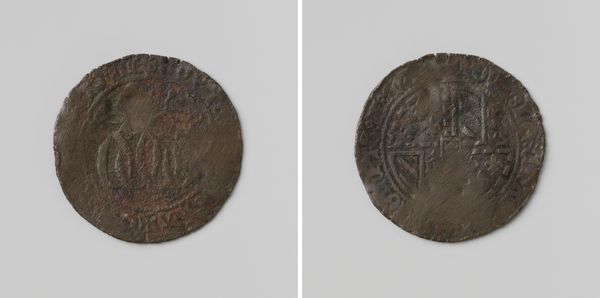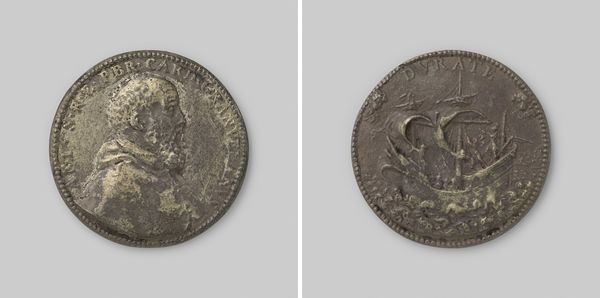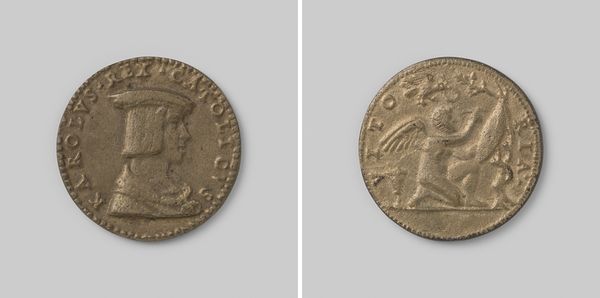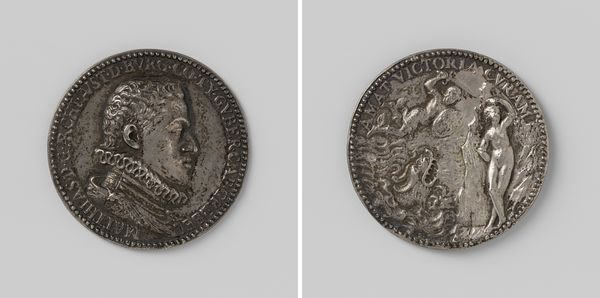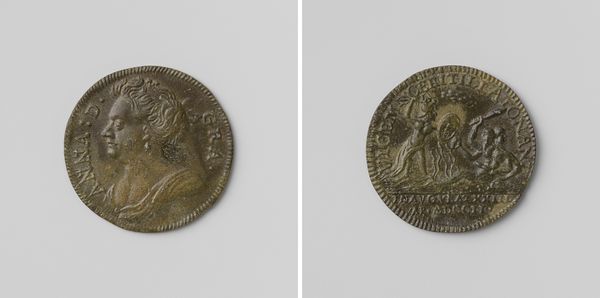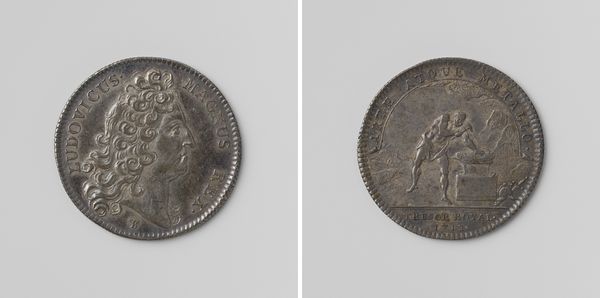
relief, bronze
#
portrait
#
medal
#
relief
#
bronze
#
11_renaissance
#
italian-renaissance
Dimensions: diameter 3.7 cm, weight 14.34 gr
Copyright: Rijks Museum: Open Domain
Curator: Editor: Here we have a bronze relief from 1570 by Gianpaolo Poggini, a portrait medal of Anna van Oostenrijk. It’s small, but there is something substantial about its presence. How would you approach such a piece? Curator: Given that this is a bronze relief and functions as a portrait, let's consider the socio-economic implications of the material and process. Bronze, of course, isn't cheap, even today. What kind of labor and economic investment do you think went into creating these portrait medals? What message does that materiality convey? Editor: Well, bronze casting involves skilled artisans, a significant amount of metal, and fuel for the furnace, and as such I can only imagine the kind of people who would be involved. If it is not cheap, that is, maybe this portrait was specifically reserved for the upper class or elite in the Italian Renaissance. Curator: Exactly. And beyond the raw material, the relief itself requires specialized tools and training to create such fine details. We see the elaborate dress and idealized profile of Anna. What might a mass-produced, say, printed portrait offer versus a bronze? How might the choice of bronze, in this context, separate high art from a common commodity? Editor: A print would have been more accessible and widely distributed, focusing on broad communication. This bronze, on the other hand, becomes almost like a status symbol, a tangible assertion of power and refined taste linked to both its materiality and the labor embedded within. Curator: Precisely. Furthermore, who profits from such production? What workshops existed, who patronized them? Even the little hole suggests it would have been hung, but I wonder where or for whom? It's not just about representation; it’s about how power operates within a specific social context through material objects. Editor: That gives me a lot to consider—the choice of material says so much about how this image functions within its society, even down to where this portrait would be placed and who it would be made for. Thank you. Curator: Indeed. Examining artwork as a product of material conditions opens a far richer understanding. I am happy we could explore together these social and political frameworks influencing art creation!
Comments
No comments
Be the first to comment and join the conversation on the ultimate creative platform.
